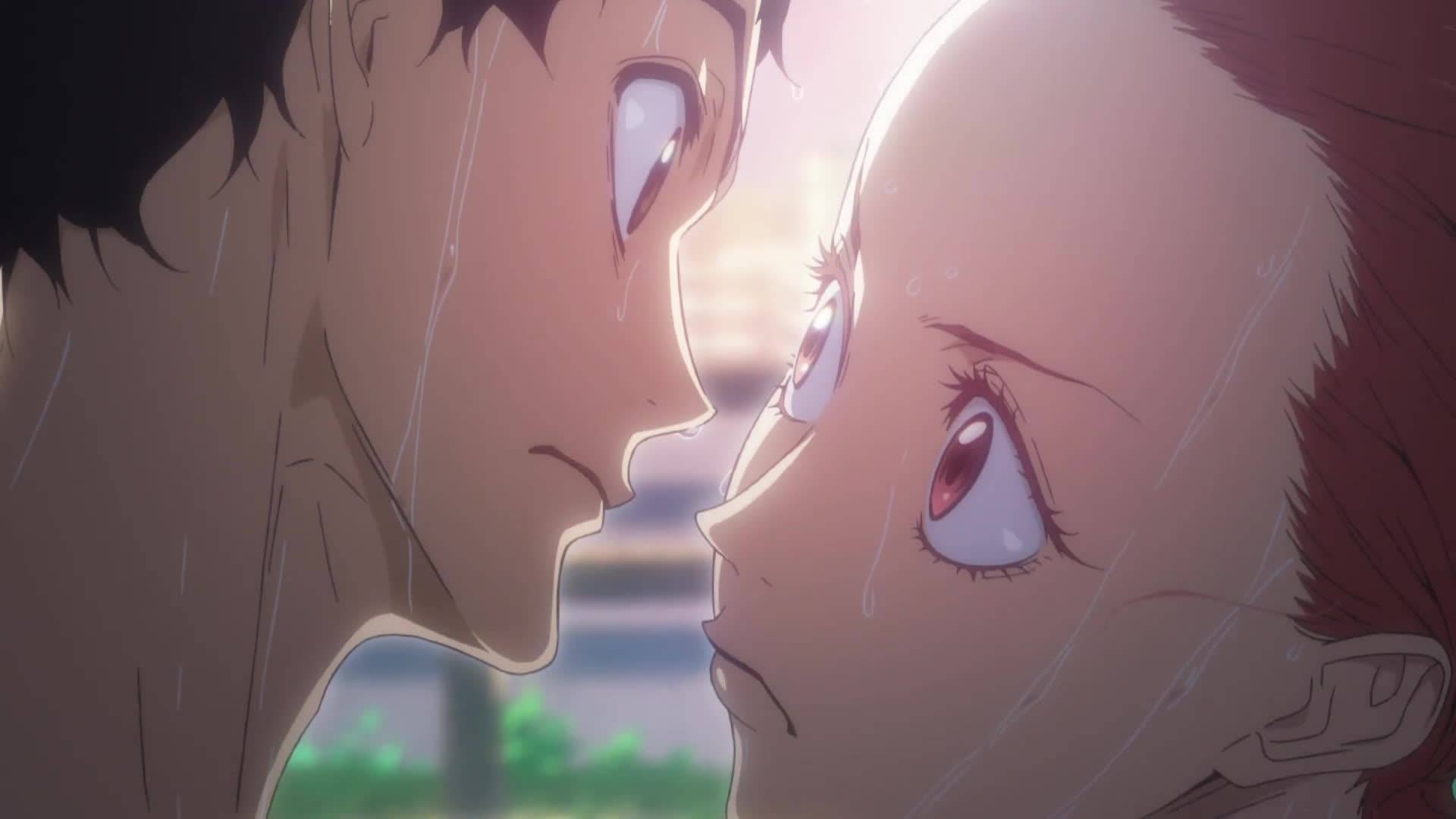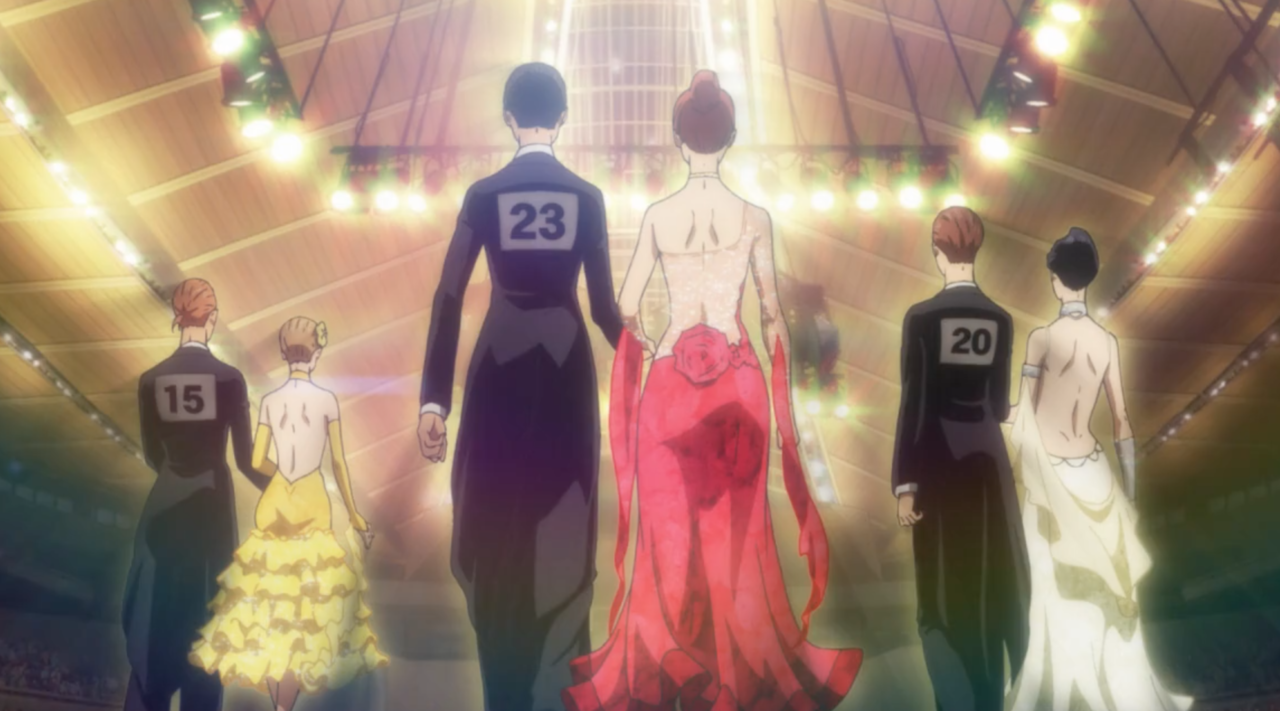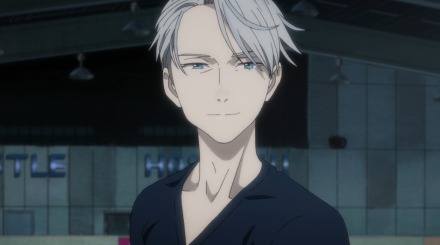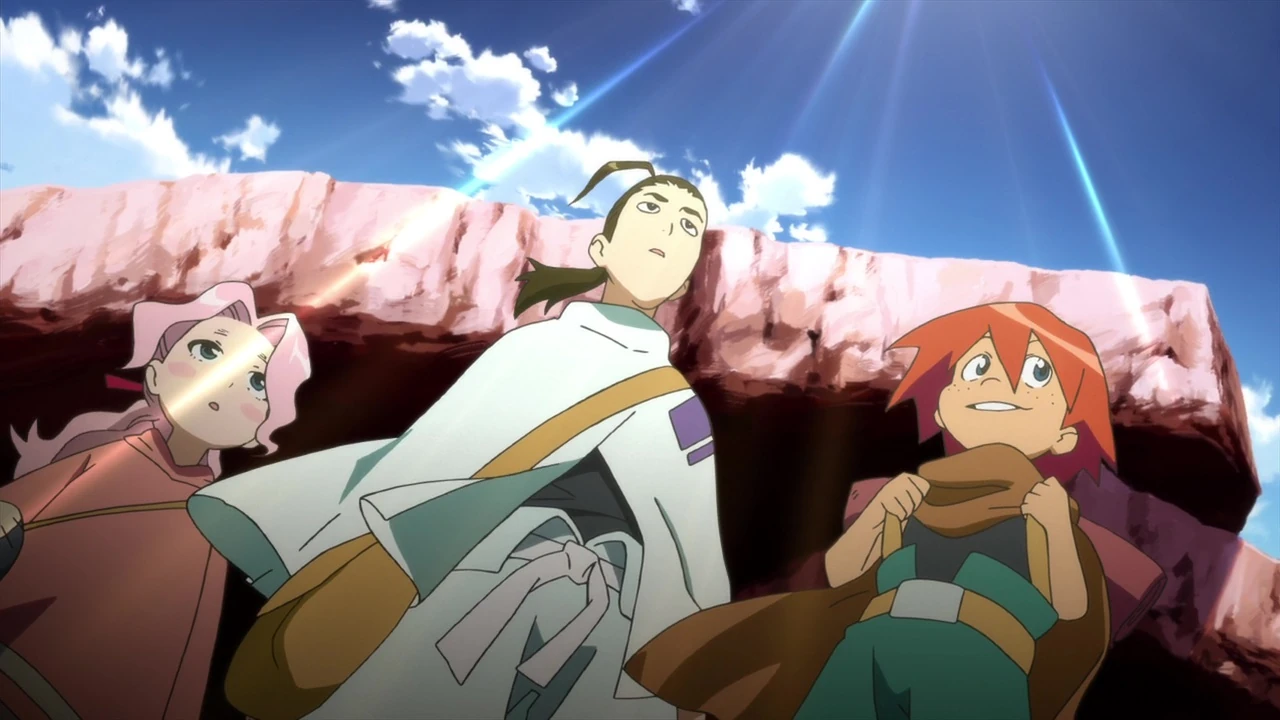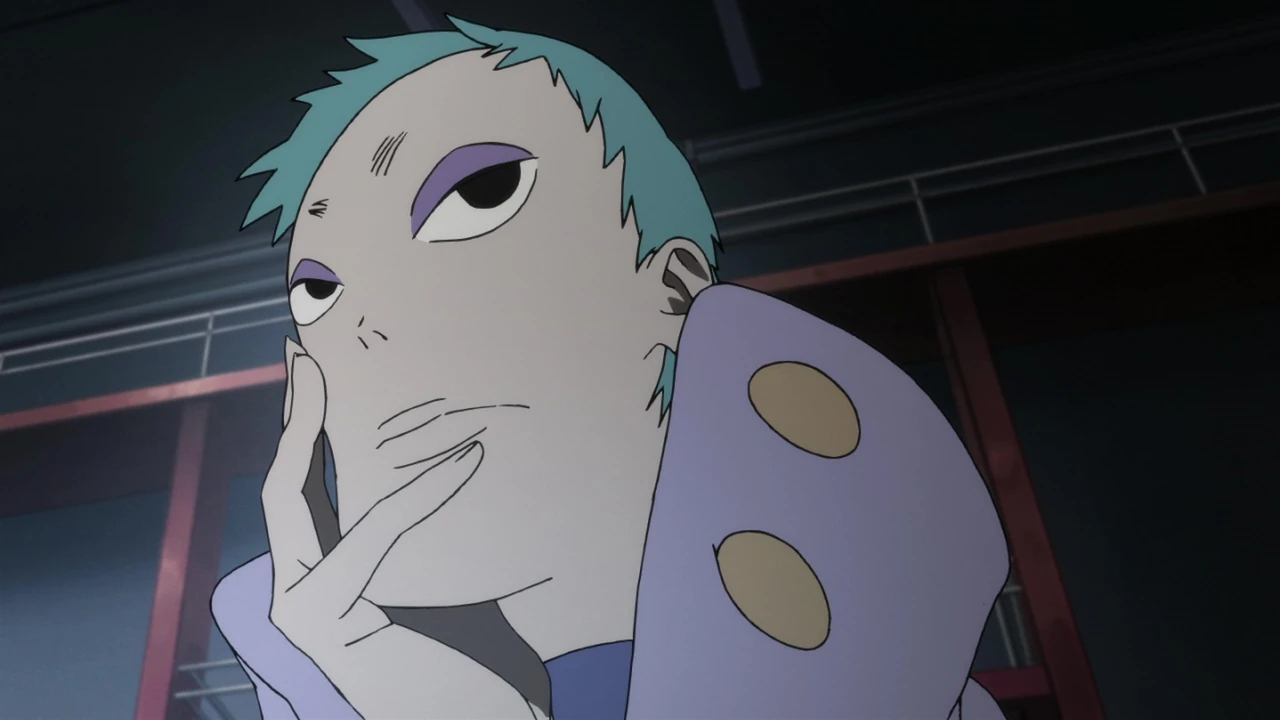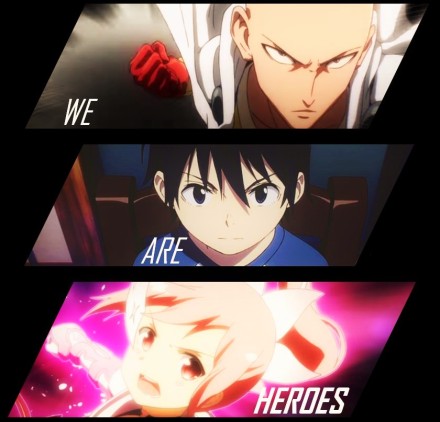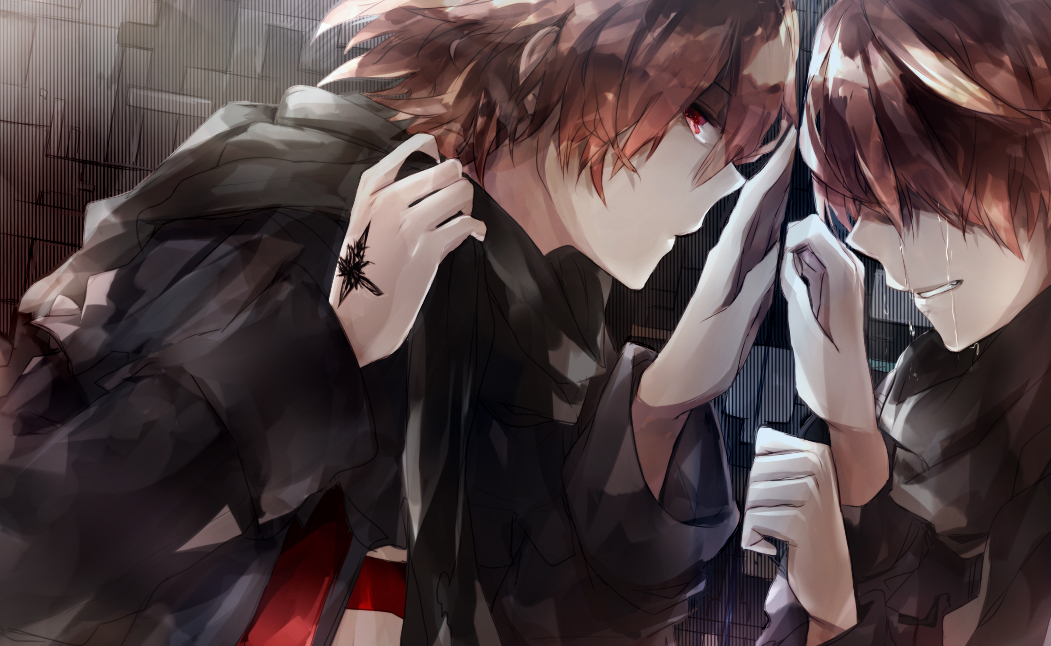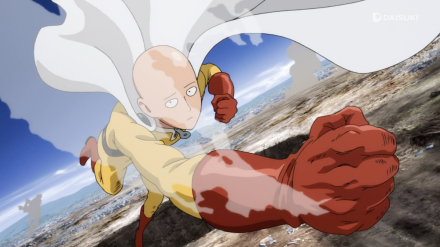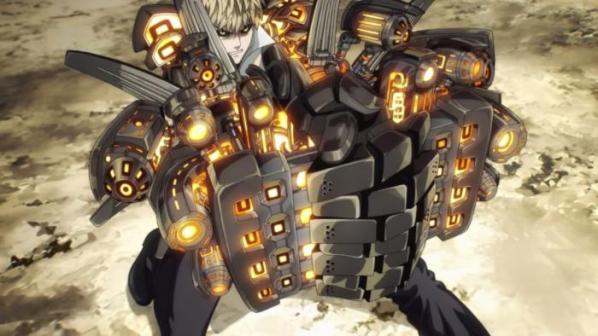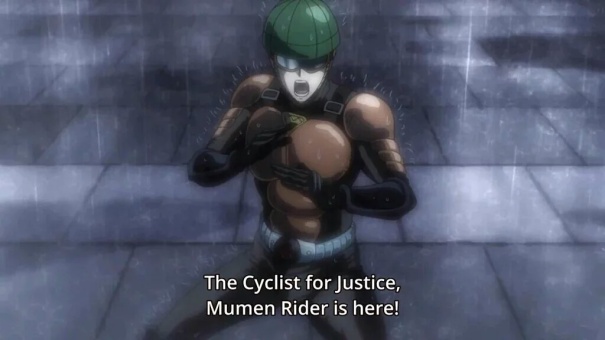Chances are that if you were linked here from another blogger pal, you might be new to this place. To those first-timers, “Hi, I’m Takuto, and welcome to my anime cafe!” As part of the OWLS blog tour’s second monthly topic for 2018, “Competition,” I decided to try something new. Instead of analyzing a certain anime, breaking it down to what makes it relative for the month’s theme, I wanted to chronicle a certain experience instead.
As I’m sure you all know, the 2018 Winter Olympics is happening right now in PyeongChang, South Korea. And if you follow me on Twitter, you’ll know that I am very enthusiastic about all of the competitions that have unfolded, and the awe-inspiring feats we’ve been lucky to witness. For this post specifically, I’d like to look at Olympic figure skating, as well as some of #TeamUSA’s most incredible moments out in the wintry tundra of PyeongChang.
In honor of the 2018 Winter Olympics, this month’s topic will focus on the theme “Competition,” as the Olympics is where athletes from all countries join together to compete in sporting events. Through these games, we see how “competition” brings out the grit, the teamwork, and the competitive spirit within athletes. We will be exploring anime and pop culture media that discusses the good and the bad when it comes to competition, and what it can teach us about ourselves and the world around us.

After consulting the OWLS team, it was brought to my attention that the Olympics does, indeed, fall under popular culture. So, in taking a slight break from anime and manga, please enjoy this figure skating recap and also a truly rare side—the winter sports fanatic side—of me, Takuto! Thanks Lyn for the exciting prompt!
A brief look into the world of figure skating—a visit to the 2018 Winter Olympics in PyeongChang (Feb 9, 2018 – Feb 25, 2018) and the thrilling successes we’ve seen thus far. Again, these are all my personal favorite highlights, so for full Olympic coverage, visit their official site. None of these pictures belong to me.
A Little Background
Contrary to what you may believe, my love for the figure skating did not begin with Yuri!!! On ICE. The popular anime which took the world by storm did make me more invested in the sport to the point where I am now, but the truth is that I’ve always enjoyed the non-typical U.S. favorites like swimming, diving, dancing, gymnastics, and of course, figure skating. I’ve never been big on sports. Like, at all. But there’s an allure to the ones I listed above—an artistic beauty—that transcends “Who can run the fastest?” and “Who can be the strongest?”
These athletes still want to be the best, but to me, their hard work and struggles translate more as a story than a game of football ever could. In a sense, figure skaters are performers putting on a show, artists who match unique music to physical movement, rhythm, technicality, emotion, and expression. Given my own background in the performing arts, I can relate to them.
So naturally, I find myself hooked to the only sport which unifies the entire world through music in one glorious cup for sportsmanship: the Olympics. Unlike figure skating’s ISU Championships, including World, European, Four Continents, World Junior Championships, and the Grand Prix (as made popular by YOI), the Winter Olympics is the only figure-skating comp which receives worldwide coverage on just about every news outlet. As such, the joys of the beautiful sport became a quadrennial treat; every four years brought a reunion for my love of the ice; likewise, every other four years, I got to enjoy some swimming.
After Vancouver in 2010 and Sochi in 2014, the Winter Olympics are back for 2018 in PyeongChang! As a half-Korean myself (my mom was adopted from South Korea many years ago), the political intensity between the North, the South, and the whole world, really, made skeptical and a bit cautious. What if something horrendous happened? How would that forever shake up world history? Here we are, almost finished with the Winter Games’ and honestly, it couldn’t have gone better! From North Korea’s permitted entry to the ENTIRETY OF NORTH AND SOUTH BEING ANNOUNCED UNDER ONE SATISFYING “KOREA,” all felt oh-so right with the world.
With what I understand, one of the loudest cheers heard in PyeongChang was actually Korea’s joint entry, and reports say that the Koreans have been overly kind and supportive of ALL teams and nations. Simply incredible spirit, and it makes my heart so happy!

Major victories were made before the Olympics even started, and now that the brilliant cauldron has been lit, it’s time to begin the games! Here are some of my favorite skaters!
The Members of Team USA

Bronze Medalists in the Team Event!
Nathan CHEN
Building up over months of media pressure and hype, Nathan Chen’s Olympic debut was met with love by his supporters despite a short and free program full of falls in the team event. I felt so sorry for the poor dude, as he’s ONLY 18, but hey, we all have our bad days, and Nathan’s true fans know what even a normal day looks like for him (which is, well, quad after quad after quad). After moving on to the men’s single, he turned out another disappointing performance. By this point, I just wanted him to be out of the media’s way. But then it happened: Nathan Chen had a good day. A very good day.
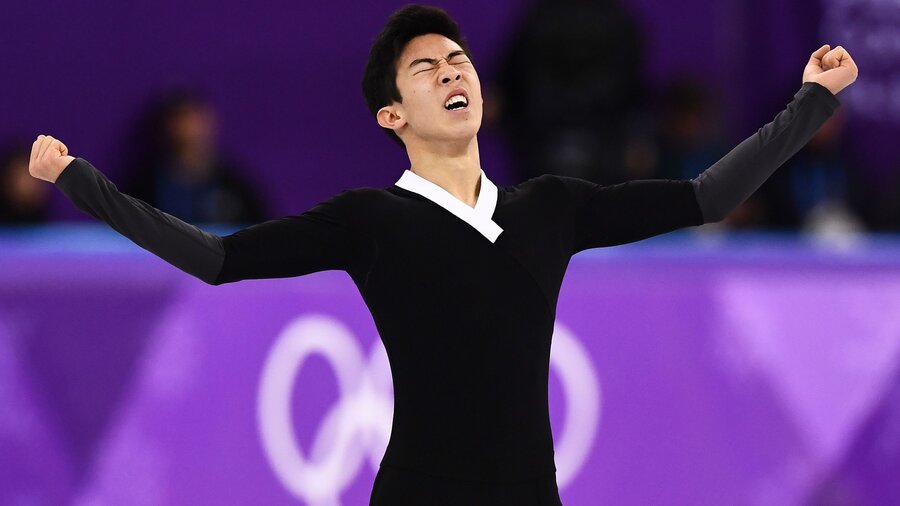
For his last skate, Nathan went out and showed us what he’s truly capable of, reminding us that yes, THIS is the 2015-16 Junior Grand Prix Final Gold Medalist he was celebrated for being, one of only a handful of “Quad Kings” out there (and likely the best). In this wicked free program, he became the first skater to ever cleanly land FIVE quads at the Olympics, and, arguably more impressive, the first to try a SIXTH. If that’s not an EPIC comeback, I’m not sure what is. Nathan scored the highest free program technical score in history, pulling him up from 17th place to 5th. PLUS, he was the first to ever land a quad flip at the Olympic Games. In an interview afterward, he stated that he just wanted to “try it, as he’d been practicing it,” and that he had “nothing to lose by this point.” And BOY did it go for it! He’s young, he’s a hard worker, and he’s an absolute beast on the ice—and I can’t wait to see the heights he climbs to next.
Adam RIPPON
I’m sure the whole nation if not the world is already acquainted with this flamboyant skater, but beyond his little political skirmishes, Adam inspired many around the world as the first openly gay athlete to compete at the Winter Olympics. He’s absolutely full of himself at times, but it’s that combination of sass, charm, and pride that made him stand out in the first place. On top of it all, he’s one of the most beautiful skaters to compete in 2018; after not qualifying for Sochi in 2014, Adam went up to his roof with best friend and fellow skater Mirai Nagasu, ate junk food, then kicked it into high gear to make it to PyeongChang as a 28-year-old. His performances may not have had the highest technical base scores, but in each of the four times Adam Rippon went onto the ice, the whole world stopped for a moment and stared in awe at Adam’s swooping elegance and magnificent pride.
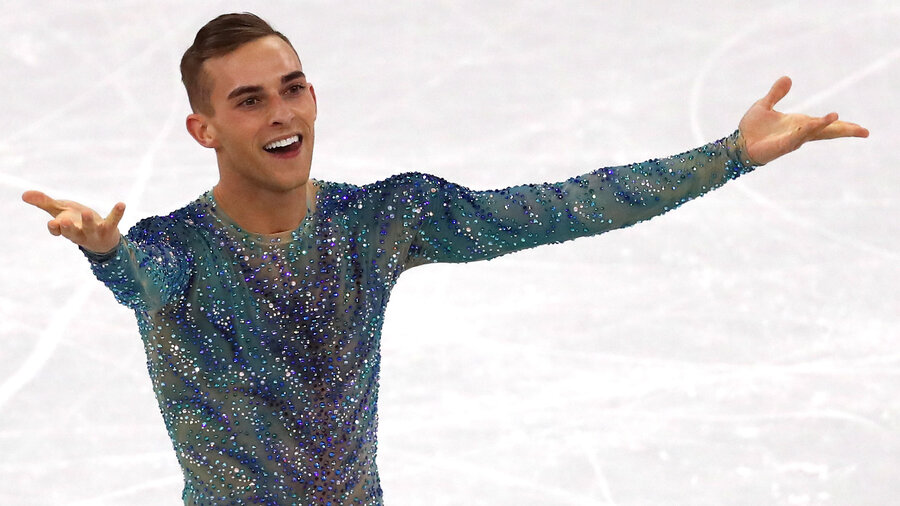
Alexa and Chris KNIERIM
Showing us ultimate #couplegoals as the power of love (and hard work) pushed them to 4th place, Alex and Chris are the sweetest pair skaters out there. They didn’t score as high as they’d like to, but each performance (team and pair) was absolutely gorgeous and made me want to follow their Olympic journey via social media. The way Alexa and Chris interact is so wholesome (his giant V-day teddy bear at the kiss and cry, UGH), and they shared such a precious moment each time they skated together.

Mirai NAGASU
Though we can’t underestimate her 2nd place victory in the team event’s ladies single free skate, Mirai’s claim-to-fame occurred when, right at the start of her program, performed the triple axel, becoming the first American female figure skater to land the stunning jump at the Olympics, and the third woman from any country to do so. She’s a fantastic skater whose programs’ base level points are always leagues ahead of the competition. Daring, kind-hearted, and supportive of her team, Mirai knows exactly what she wants and how to get it—even if it means smashing records, baby! In the ladies single short program, she missed the triple axel, causing her to fall to 9th place. But even so, she’s still a strong, accomplished Asian-American female! Girl, you rock!

Alex and Maia SHIBUTANI
Efforts by Asian-American siblings Alex and Maia SHIBUTANI (AKA best pair!!) pulled the US forward in the team ice dance short program, scoring 2nd place with their exciting Latin dance. I just love these two so much, and their performance also made me start following the #ShibSibs on social media! BUT WAIT, they get better. In the individual ice dance short program, they repeated that exact same number and grabbed even more of the world’s attention. Finally, in what has already been a back-to-back series of best performances ever, the Shib Sibs gave everything they had left into the free dance, pushing them to win YET ANOTHER Olympic bronze to add to their incredible Olympic debut!

Alex and Maia stand as favorites YES because of their amazing sibling bond, but also because they bring to pair ice dancing a kind of love and passion unique from the typical “sex appeal” of couples. They redefine this side of figure skating with every inspiring performance (heck, they made Coldplay’s “Paradise” actually enjoyable for the song’s haters), and I’m just so proud of their ability to monopolize on their strengths and fight on equal terms by unashamedly using their own style of pair dancing! WOOHOO! Love you Shibs!!
The Members of Team Japan
Miu SUZUKI and Ryuichi KIHARA
We were treated to a real surprise when in the pair skating short program when this pair brought Yuri!!! On ICE to the real world. Skating to Yuri Katsuki’s own free program song, the two captured the hearts of fans (myself included) and proved that YOI was more than just a show, but a phenomenon. Though they ended in 8th here, no amount of statistics or ratings could tell me that the weren’t magical in every sense of the word. LOVED THEM!
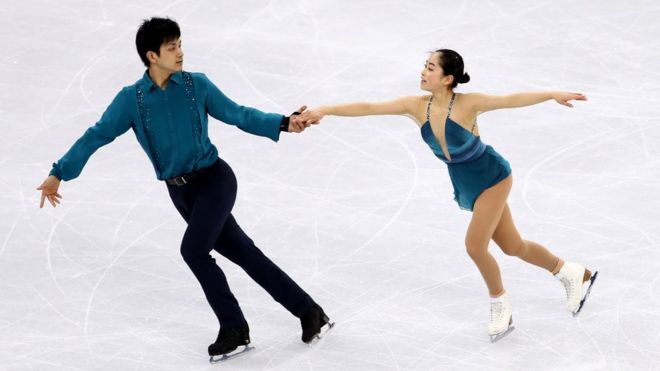
Shoma UNO
My personal FAVORITE solo skater, this sleepy boy stole an overwhelming lead in the team event’s men’s short program by almost 15 points with Vivaldi’s Winter’s 1st Movement! Following lackluster performances from Patrick Chan (Canada) and Nathan Chen (USA), Shoma showed up at the very end and pulled the ice out from under everyone, granting Japan those gratuitous 10 team points. Whether he knows it or not, scoring above 100 in the short (103.25) is a tremendous feat (an Olympic record, in fact), and it’s unbelievable that he’d go on to do even better in the single!

The men’s single short program rolled around and Shoma, somehow nonchalantly, shrugged off his Olympic record-breaking skate WHICH HE JUST PERFORMED: 104.17, not the best in the world but a personal victory for the guy (leaving him in third place). Skating last in the men’s free, he was challenged by needing to overcome both Javier and Yuzuru’s perfect performances. And again, Shoma delivered!! After falling during an attempt at his first quad, Shoma began laughing to himself, letting the positive vibes of officially being done pump his adrenaline. Culminating in his final efforts to surpass his best friends and rivals, Shoma exploded in the VERY LAST MINUTE, pulling off all kinds of insane jumps back-to-back and landing them flawlessly—I honestly couldn’t believe how driven he was to reach the top! Shoma finished with Olympic Silver, placing himself right in front of Javi but before his “eternal goal, his eternal idol” Yuzuru Hanyu.

To quote a fan I follow on Twitter:
The boy who quietly carried Japanese figure skating through two Grand Prix assignments, the Grand Prix Final, Japan Open, 4CC, the Olympic Team Event, and the individual who placed 1st or 2nd every single time. Thank you for all you’ve done. I am so proud of you.
Shoma Uno had yet to completely step out of Hanyu’s shadow, but in the 2018 Olympics, Shoma proved to the world that he was more than worthy of standing among figure skating’s greatests. Now, go get some sleep, my guy—you’ve got a lot of video gaming to catch up on!
Yuzuru HANYU
At this point, I’m not even sure what I can add about Yuzu. Coming out of a terrible ankle injury in 2017, Hanyu just began jumping again a few weeks before the Olympics. He had a lot to live up to as the best skater in the world, but he was more than determined to fight for his championship title. Winning gold at the Sochi Games in 2014, was Hanyu honestly able to hold his own against the world?
Clearly, we had nothing to worry about.

Claiming first in both the men’s short and free programs, Pooh-kun rained down from the heavens, shocking viewers who were unfamiliar with the tradition of his fans. Yuzuru’s performances were absolute healing wonders, his short program’s technical score breaking the previous Olympic record (which I believe he had set). Nathan Chen might’ve broken the record for the free, but Yuzuru’s consistency in executing his masterpieces made him the real gold winner here.
At the end of a long and stressful season, Yuzuru Hanyu—the living legend, the King of the Ice—defended his Olympic Championship title, and I wouldn’t have had it any other way. Among all his other successes, he will be remembered as the skater who rose from injury to infinity through sheer strength (and unity) of body and mind, a reminder not to underestimate the great athlete of Japan.

Competition Around the Globe
Javier FERNANDEZ (Spain)
One of the few skaters I knew before the Olympics, Javi is such a charmer both on and off the ice. Though he’s rinkmates with defending champion (among many, many other titles) Yuzuru Hanyu, even sharing the same coach (Brian Orser), there’s never any animosity detected between the two. The two are real dorks around one another, actually, and when Shoma’s there, it’s the GPF triplet that goes waaaay back. I have Javi on this list not only because he skated excellently (earning a season’s best in both of his skates, ultimately placing him in third), but also because he became the first skater from Spain to ever medal in the Olympics. Following Shoma’s skate, Javi told Yuzuru that this was likely the end of his career, to which Yuzu broke down into tears repeating “I can’t do this without you.” As if my heart hadn’t shattered enough, in a closing interview, Javi confirmed that he was pulling out of the the World Championships in Milan. The accomplished Spanish skater unexpectedly swooped in and snatched my heart, proving that long-lasting friendship IS possible (and beautiful) in competition.

That concluded the men’s single: Javier, Shoma, and Yuzuru—dream results for any longtime fan of this GPF trio of friendship!
Gabriella PAPADAKIS and Guillaume CIZERON (France)
Papadakis is an incredible skater who shouldn’t have had to deal with a wardrobe malfunction—of all things—at something as big as the Olympics. What hurts even more was that BOTH their short and free programs were flawless, meaning that they WOULD have taken first (which they held for a while), as their score in the free was a point higher than reigning champions Tessa and Scott of Canada’s free score (which also means they would’ve set a world record). Heck, the poor woman should’ve been given extra points for coping with such a trivial matter! But unfortunately, that’s not how the game is scored, and the show must go on.
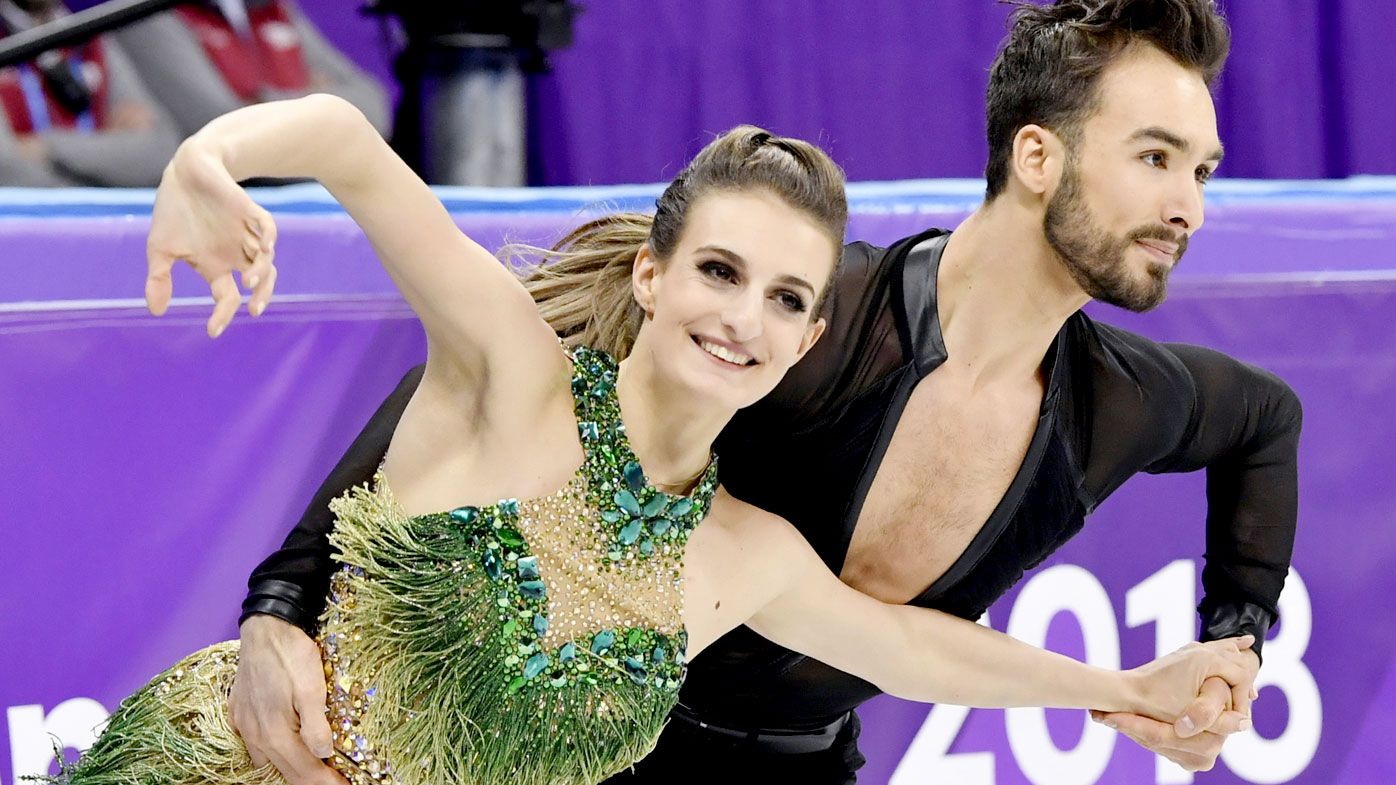
Evgenia MEDVEDEVA (OAR)
Ahhhh, oh Evgenia. Beloved as an 18-year-old Russian superstar and a open young fan of anime and Japanese media, Evgenia didn’t let a foot injury sustained back in 2017 stop her from continuing to achieve new heights. She opened up the ladies short program in the team event by breaking her own record set in the short—of which she broke again in the single short program! Perfect jumps, strong lands, and masterful conveying of emotion EVERY TIME. Also, her arrangement of Chopin’s Nocturne in C Sharp Minor (No. 20) was so, sooo beautiful. I’ve really come to love Evgenia’s journey both as an anime fan and the world’s greatest female skater. She always seems to have fun with the sport and its peoples, but also never underestimates their abilities and individual hard work. If you enjoy watching young champions fight for their title, be sure to follow Medvedeva in the last event of the Olympics, and perhaps beyond this great competition!

Alina ZAGITOVA (OAR)
A rising star in figure skating, 15-year-old Alina Zagitova poses more of a threat to Evgenia’s supremacy than any other female skater in the world. She’s already bested her in one major competition, and Alina’s only direction is up. Alina’s style is very Russian, sticking to classical music, the finesse of ballet, and using her slender figure to pull off some explosive jumps. Zagitova is chaos perfected, and as she maintains the lead on the ladies single short program, surpassing Evegenia’s newly set world record RIGHT AFTER SHE MADE IT, you can guarantee that the thrilling free program finale will continue the Olympic Battle of the Russian Princesses.

Aliona SAVCHENKO and Bruno MASSOT (Germany)
Of all the stories here, Aliona’s surprisingly is my favorite. When the Aliona first stepped onto the scene, I found her looks to be way too “prickish” for my tastes. But once the downbeat of “That Man” by Caro Emerald played, Savchenko burst into life, becoming the fiercest, sassiest woman in the entire stadium. Love may be a drug, but the charisma Savchenko was addictive. Their performance was more engaging and playful than any of the pairs’ out there, and though she was able to hold up 3rd in the team’s short program (right in front of the Knierims), they fell apart in the team’s free.
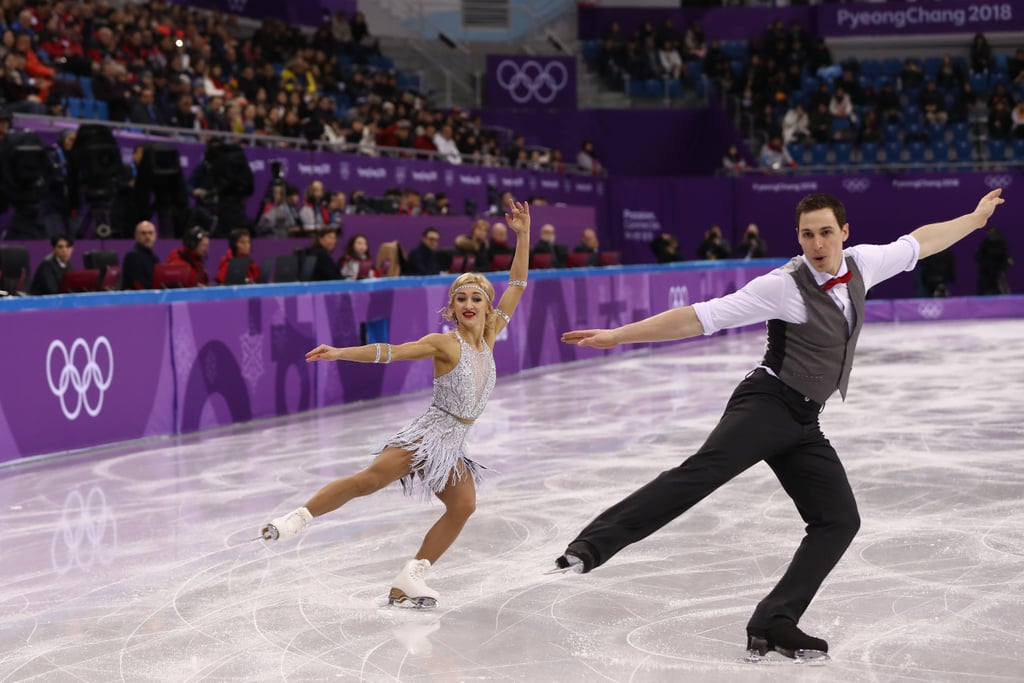
This was Savchenko’s FIFTH FREAKIN’ OLYMPICS and all she wanted was the gold. FIVE OLYMPICS. The woman is old, 34, and her time in the spotlight was quickly fading—if it wasn’t going to be here, it was never meant to be. In terms of Olympic records . . . five visits, over twenty years of waiting, many partners, and only two bronze medals to show for it? Yeah, she wasn’t going to have a single mistake.
So she skated her heart out in the pair skate short and free programs—with Massot, of course. For someone her age, physically, this was the end. To her, age was just a number. And though one may call it luck, or chance, or even karmic destiny, it was really Savchenko’s unwavering passion for victory—and Massot’s want to not fail her—that finally, FINALLY won Aliona Savchenko the gold medal. Earning the highest score ever recorded in pairs free skate, it was one of the most masterful, intense dances I’ve ever seen in my life, and it ended in her crumbling to the ice smiling, crying, winning.
In her fifth trip to the Winter Olympics, Aliona Savchenko finally won gold.

Through her competitive edge and triumph, I saw firsthand that hard work, grit, and perseverance will never let a person down. When faced with failure: try, try, try, and try again. One day, you’ll get there, and the achievement will be everything that you dreamed of and more.
“All competitors who are competing here are really strong, not only in body, but strong inside because we are sportsmen.” —Evgenia Medvedeva
Bringing it All Together
I think I’ve fanboyed enough about the Winter Games. Unlike any other competition in the WORLD, the Olympics has the power to unite practically all people on the planet in harmonious sportsmanship. It’s a fun, vibrant time to be alive, always full of excitement, team spirit, friendship, and the hope that we can reach our true potential through bridging the language barrier and competing against the best and the brightest. The world is much larger than we often think, and by watching the Olympics, we are reminded that talented, hardworking individuals reside all over the place—the Olympics just grants them the spotlight, and helps draw out that spirit for all to see.
If you missed the 2018 Olympic Winter Games, never fear—you can always catch highlights on the news, as I’m sure the athletic high will linger for a while longer. I can’t encourage you enough to join everyone in Tokyo 2020 for the Summer Olympics, and then back in Beijing for 2022—the completion of this Asian circuit!
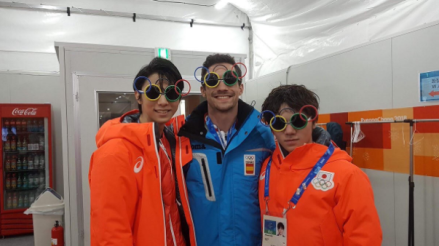
Did you have a favorite sport to watch this winter? What teams, individuals, or pairs did you find yourself cheering for? Favorite moments? Believe it or not, there’s SO much I left out (like Canada’s victories, China’s tranquility, and Italy’s cool numbers), so I want to know all about YOUR Olympic viewing journey! Don’t forget that as far as figure skating is concerned, the ladies free is still left on Thursday—a thrilling battle between the Russians, no doubt! Let me know what you thought of this coverage post down in the comments!
This concludes my February 20th (whoops!) entry in the OWLS “Competition” blog tour. Anituber Gigi of Animepalooza has a video for you on one of her favorites, the rivalries in Yowamushi Pedal which you can watch right here! Catch the amazing Irina (Drunken Anime Blog) today, February 21st, on the beloved Hikaru no Go, as I’m positive it’ll be an impressive write-up (as always)! Thank you so much for reading, and until next time, this has been
– Takuto, your host













